| From Montreal we had a brief trip south across the
river. Montreal (and Laval) are on islands with some quite wide waterways
to cross. The traffic south of Montreal is horrendous. This is one of the bridges
we crossed. |  |
 |
Actually this is the crossing, the previous shot came second! It is very
typical of the large bridges we have found in Canada. Some of them are
amongst the largest of their type in the world. Things in Canada are large,
not as in the US where they just tell you they are. |
| We (I) wanted to go to St Constant to the Canadian
Railway Museum. It has a large collection of snow clearing
equipment as one might expect.. | 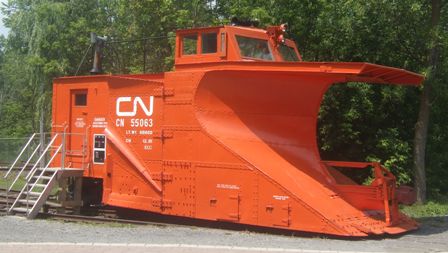 |
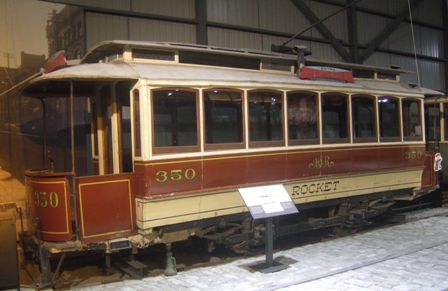 |
It also has a very large collection of tramcars, mainly from Montreal which
used to have an extensive system. The Rocket was Montreal's first electric
streetcar. |
| The Montreal City Passenger railway started with
horse-drawn sleighs in 1861 when the population was 90,000. 104 were still in
use in 1892 when the population had reached 200,000, and the tramways were electrified and winter
snow clearance began. The trams were withdrawn in 1894. This is the last one
in Canada. They were unheated. The passengers used straw to keep their feet
warm but the drivers had only their coats. |  |
 |
When railways as we know them began to operate the passenger cars were large and well appointed, used as they were for quite
long journeys. They were also very heavy, necessitating very large
locomotives. |
| CNR49 was a 4-6-4T (Baltic) of the C10a class, one of six built
in 1914 for the suburban routes of the Grand Trunk railway around Montreal.
This was a rare wheel arrangement for North America (only 15 were
made in total). It did not need to be turned for the return
trip. |  |
 |
GTR 713 was a 2-6-0 (Mogul) locomotive built for the GTR in 1900. The
additional driving axle enabled a larger boiler to be carried and more power
to be generated. This enabled longer and heavier trains to be pulled and
marked the start of specialisation in the development of different locos for passenger
and freight work. The Mogul accounted for 28% of the GTR stock when this
company
merged with the Canadian National in 1923. |
| CPR 492 was a 4-6-0 built for the Canadian Pacific in
1914. Over 500 locos of this arrangement were built for the CPR and they
formed the mainstay of western operations until the 1930s when even larger
engines were developed. |  |
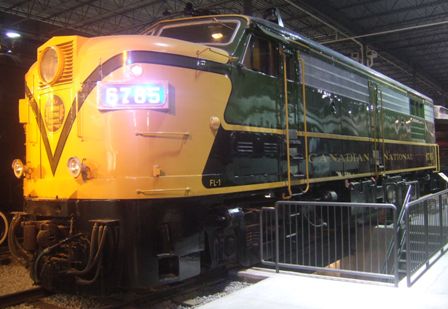 |
CNR 6765 is an FPA-4 and was one of the first reliable diesel locomotives
built to replace steam in the 1950s. This loco was built in 1958 and is a
representative of the F series. It was used on Rapido passenger trains for
the CNR between Toronto and Montreal where it maintained speeds up to
150km/hr. It was retired in 1987. |
| CNR 3684 is a diesel switcher and a representative of
one of the two main classes. It had 1800hp and spent most of its life in
New Brunswick. It was built in 1958 and was equally at home in the yard or
on the main line. Over 350 were made and the last retired in 1993. |  |
 |
CPR 8905 is a 'Trainmaster' class. Only 127 were built between 1953-6. It
had a 2400hp ex-submarine engine at a time when most engines only had
1500hp. As such it was somewhat ahead of its time and that was its downfall.
It was 10 years before other manufacturers could match the power output. |
| One of thousands of ore cars and a reminder of the
principle job of railways in North America - the transport of heavy freight. | 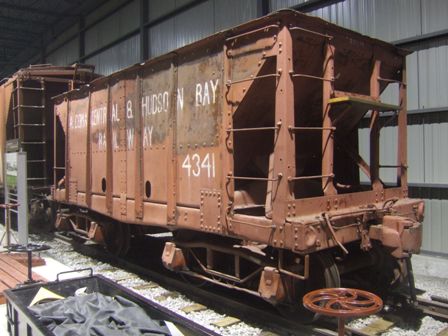 |
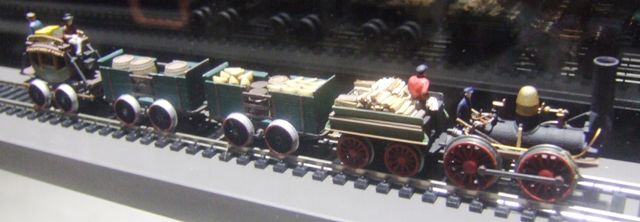 |
A tiny model of a very early train. These must have been really scary and
very dangerous with all the sparks flying. |
| The rotary snow plough was invented by a Canadian
dentist, J W Elliott. It was 1884 before a prototype was built and this one
dates from 1928. Only two of this type now exist, the other is on the White
Pass and Yukon railroad in Alaska. They were used mainly in the Rockies but
also in the Gaspé peninsula. A steam engine powered the blades but motive
power was supplied by other engines. | 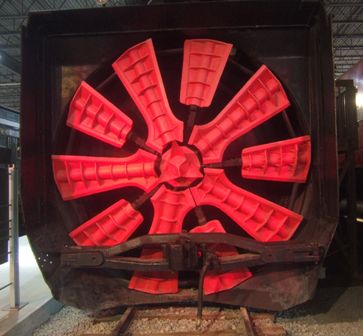 |
 |
Another example of the passenger vehicle, this one is steel panelled and
even heavier than the one above. CPR51 was originally a first class car
built in 1898. It was later (1928) modified to be a school car. It would be
taken to a remote community in northern Ontario for 8-10 days and then moved
on, completing a whole circuit every 4-6 weeks. The teacher and his wife
also provided adult education and led community social life. It was used
until 1967. |
| The museum has a small IMAX theatre showing modern
scheduled steam-driven journeys in the Rockies. They always have a diesel backup in the
train and I suspect this is what this relatively modern loco is used for. | 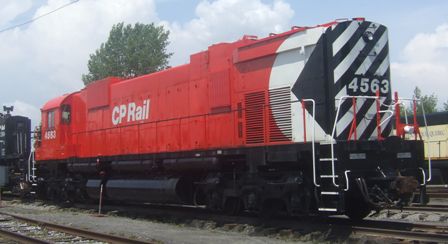 |
 |
Passenger traffic is now handled by VIA rail and this is a modern loco in
their livery. I suspect this was a prototype and is now retired. It looks
like an extended version of the British HST. |
| A separate shed holds the reserve stock. No 5550 is a
4-6-4 Hudson and would have been built around the 1930s. | 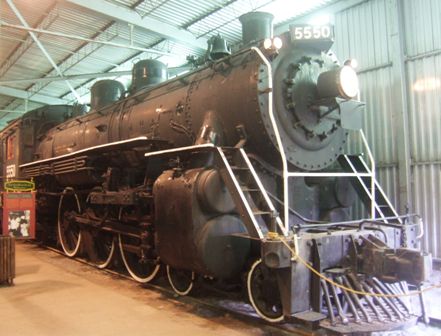 |
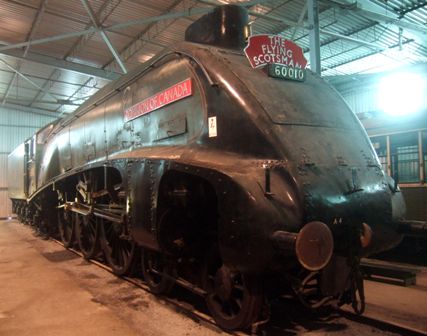 |
Tucked away in a back corner is this British A4 streamlined Pacific. One of
the locos which powered the Flying Scotsman and other London-Edinburgh
express, this engine is called Dominion of Canada which explains why it is
here. |
| Equally foreign is this French locomotive which no
doubt has an equally valid historical reason for its presence, but no
explanation is given. | 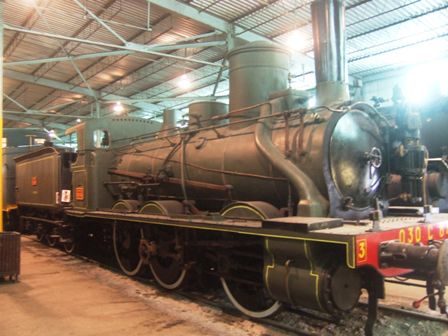 |
 |
Railways need tracks and I spotted this complex piece of trackwork in the
yard. Not common these days, it was not unusual in the past. |
|